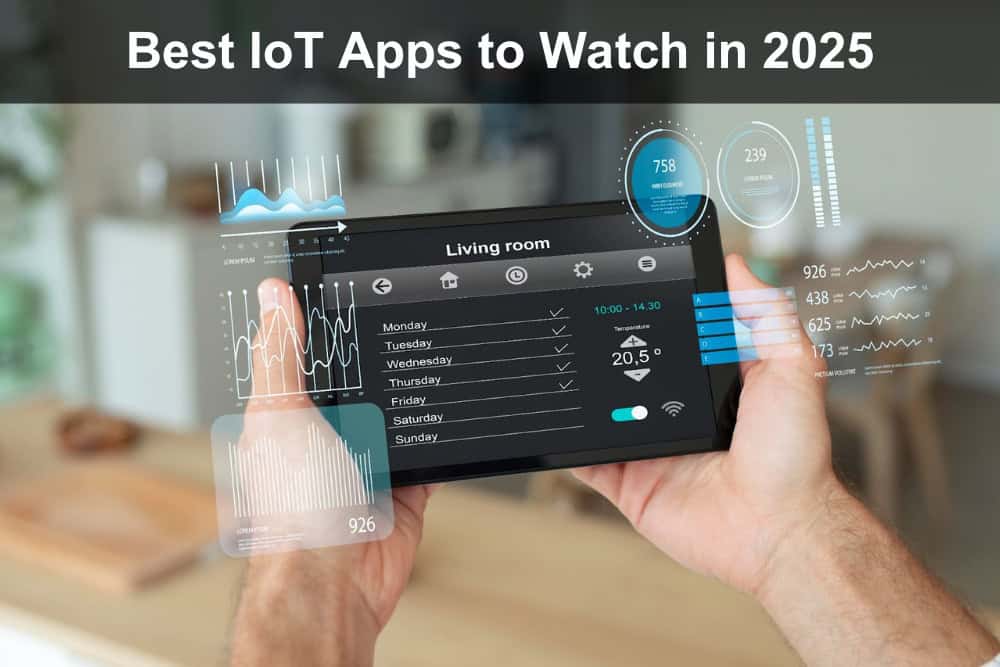
The Internet of Things (IoT) continues to transform industries — from smart homes and wearables to healthcare, automotive, and logistics. As technology continues to evolve, the Internet of Things (IoT) is becoming increasingly integral to our daily lives, enhancing efficiency and connectivity across various sectors. This transformation not only streamlines operations but also empowers users with greater control over their environments through smart applications.
In 2025, IoT software development company Stormotion stands out among the top creators of innovative connected apps that improve efficiency, safety, and user experience. Here is a curated list of the most impactful IoT apps and platforms that are defining the connected ecosystem in 2025.
What Makes a Great IoT App in 2025?
Before diving into the top examples, it is important to understand what sets leading IoT apps apart. The best apps offer:
- Real-time data synchronization from multiple devices
- Cloud or edge computing support
- Intuitive dashboards and controls
- Robust security and encryption standards
- Integration with wearables, sensors, or embedded systems
- Scalable architecture to handle large device fleets
- Offline fallback modes for mission-critical environments
Best IoT Apps and Platforms in 2025
1. Egret by Stormotion
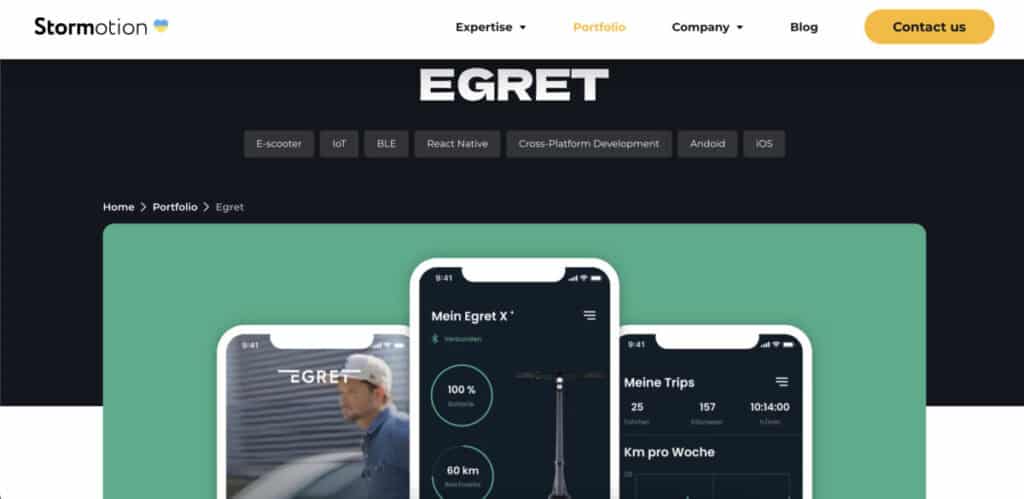
Stormotion’s Egret app exemplifies what a modern IoT platform should be — versatile, fast, and highly adaptive to industry needs. Designed to work with BLE devices, industrial sensors, fitness wearables, and smart home infrastructure, Egret supports both consumer and enterprise use cases. It comes with built-in features like real-time monitoring, OTA firmware updates, and seamless cloud integration. Egret’s modular design enables quick adaptation for sectors like healthcare, energy, and logistics. Whether tracking patient vitals or managing a fleet of cold-chain trucks, Egret delivers secure, scalable solutions that give businesses total control over connected operations.
2. Tuya Smart
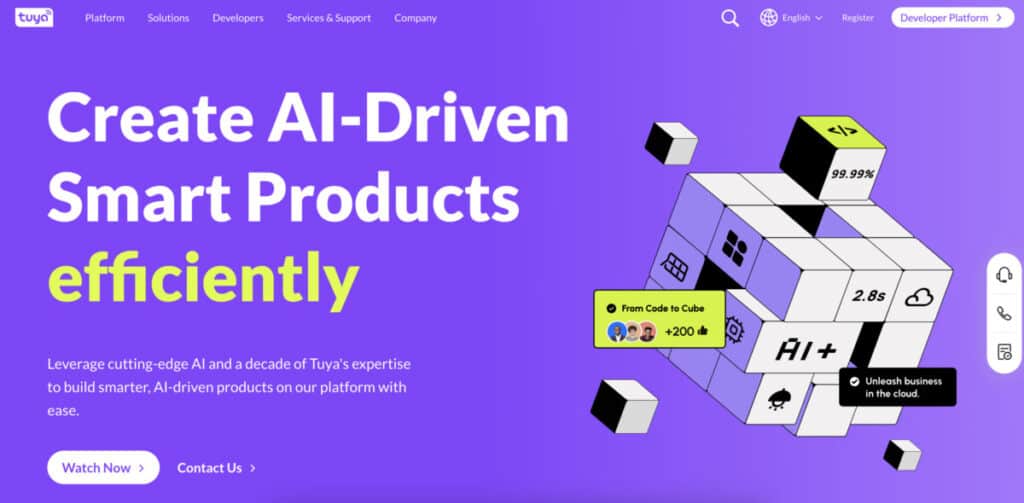
Tuya Smart offers a comprehensive platform that powers millions of smart home devices worldwide. With a powerful backend infrastructure, it allows OEMs to quickly bring connected devices to market with full control over cloud services, device pairing, automation rules, and branded mobile apps. Its drag-and-drop UI builder makes creating custom IoT apps accessible even to non-technical teams. Tuya also supports third-party integrations with major ecosystems like Google Assistant, Amazon Alexa, and Apple HomeKit. For manufacturers looking to scale globally with efficient, white-label solutions, Tuya Smart remains one of the most robust platforms on the market in 2025.
3. SmartThings by Samsung
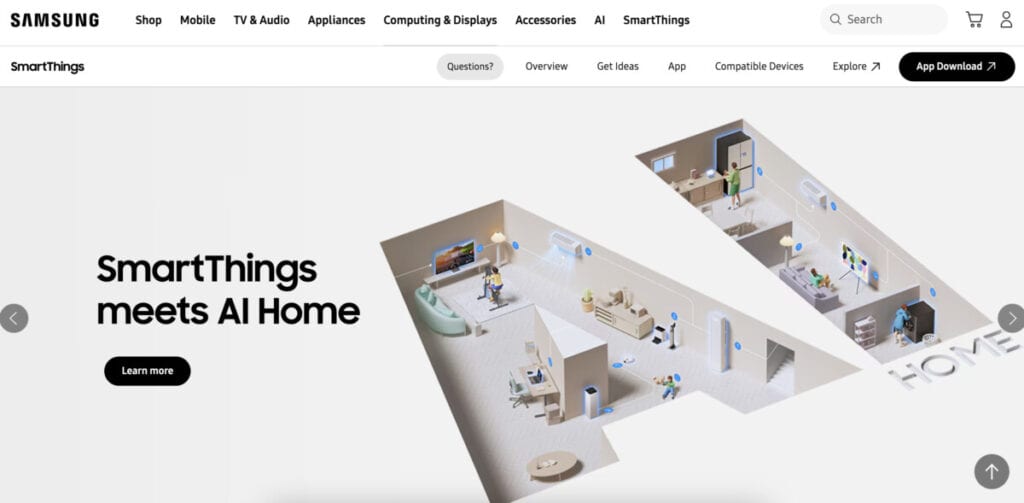
Samsung’s SmartThings platform continues to lead the way in home automation with a mature ecosystem that supports everything from lights and locks to kitchen appliances and HVAC systems. Its centralized mobile app provides users with full visibility and control over all their connected devices. Features such as scene creation, automation scheduling, and geofencing make it a go-to solution for households seeking convenience and security. The platform’s compatibility with voice assistants like Bixby, Alexa, and Google Assistant further enhances its user-friendliness. Developers can also leverage SmartThings APIs to build and integrate new IoT services across the smart home landscape.
4. Bosch IoT Suite

The Bosch IoT Suite is built for industrial-grade applications, offering cloud-based services that support connected products throughout their lifecycle. Ideal for smart factories, predictive maintenance, and remote diagnostics, it helps organizations integrate IoT seamlessly into legacy systems. The suite supports open-source frameworks and standardized protocols such as MQTT and OPC UA, allowing high compatibility across sectors. Key modules include device management, data collection, and rules-based automation, all reinforced by strong security layers. In 2025, Bosch IoT Suite is trusted by manufacturing giants and infrastructure operators aiming to maximize uptime and operational efficiency through digital transformation.
5. Blynk
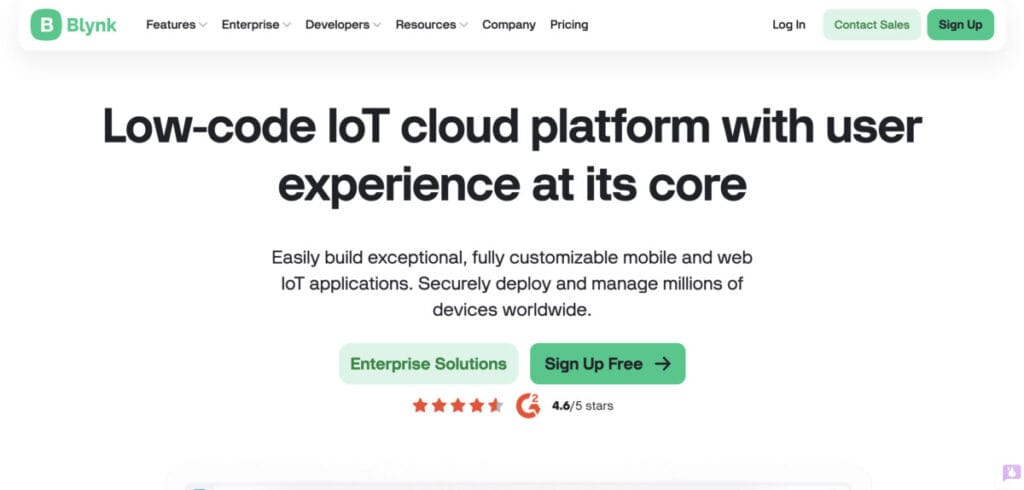
Blynk is a flexible development platform that empowers engineers, startups, and makers to build custom mobile interfaces for connected hardware. Its drag-and-drop dashboard builder, compatibility with multiple microcontrollers, and real-time data streaming capabilities make it a favorite among IoT prototypers. Developers can create mobile apps without writing a single line of frontend code, streamlining time to market. Blynk’s cloud platform supports remote monitoring and device management, while its RESTful APIs offer easy integration with other systems. Whether it’s smart irrigation systems or connected HVAC units, Blynk allows for fast, agile IoT deployment with professional-grade app functionality.
6. Philips Hue
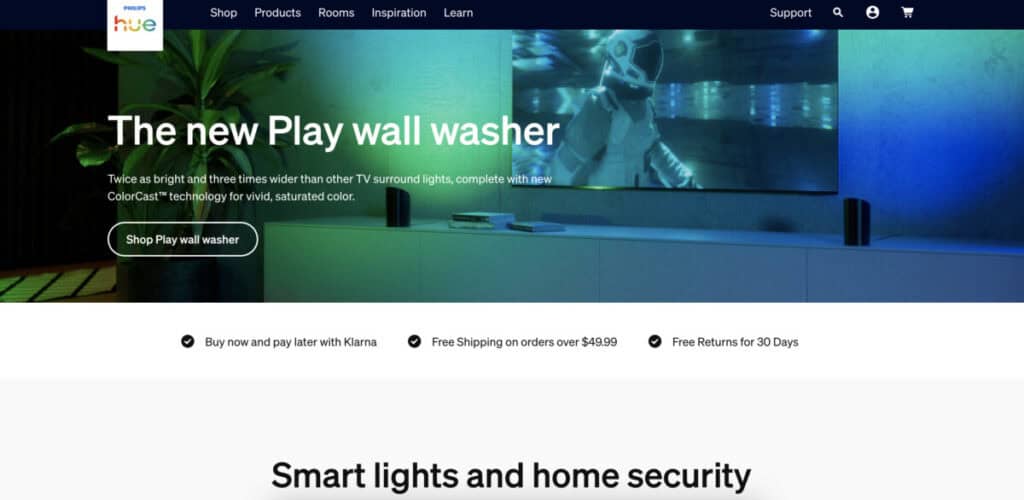
Philips Hue remains the gold standard in smart lighting solutions. Its mobile app allows users to control light brightness, color temperature, and scheduling across multiple zones or rooms. Integration with major platforms like Apple HomeKit, Google Assistant, and Amazon Alexa adds versatility and voice control to everyday lighting experiences. In 2025, Hue has expanded to support motion detection, geofencing, and complex automation scenarios. The Hue Bridge acts as the central hub, supporting up to 50 lights and accessories. Its energy efficiency and user-friendly interface make Philips Hue a top choice for anyone enhancing their smart home environment.
7. Particle IoT
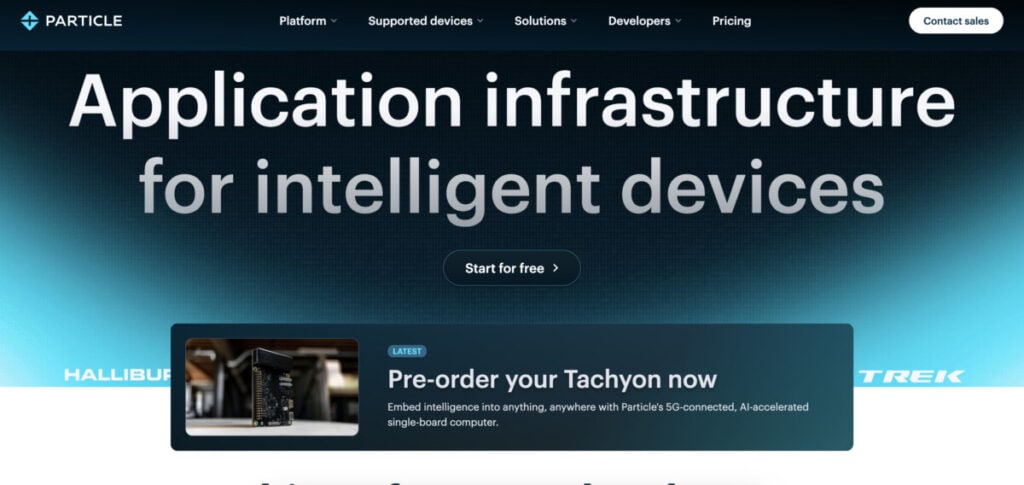
Particle offers a full-stack development ecosystem that includes microcontroller boards, cloud connectivity, and device management tools. It’s particularly useful for teams building and deploying scalable IoT products. Developers can update firmware remotely, access real-time telemetry data, and secure devices with granular access controls. The platform supports cellular, Wi-Fi, and mesh networking, making it ideal for use cases in agriculture, logistics, and urban infrastructure. Particle’s Device OS and SDKs reduce time spent on low-level development. Its scalability and reliability make it a solid choice for enterprises looking to transition from prototype to production in connected systems.
8. Fitbit

As a pioneer in wearables, Fitbit remains at the forefront of health-focused IoT. The Fitbit app syncs seamlessly with its range of smartwatches and fitness trackers to offer users comprehensive insights into their health data. Features like step counting, heart rate monitoring, sleep analysis, and stress tracking are presented in an easy-to-navigate dashboard. Users can set goals, receive real-time feedback, and integrate their data with third-party wellness platforms. Fitbit’s open API makes it possible for developers to create apps that enhance user experiences or extend functionality into areas like remote patient monitoring and fitness coaching.
9. Resideo
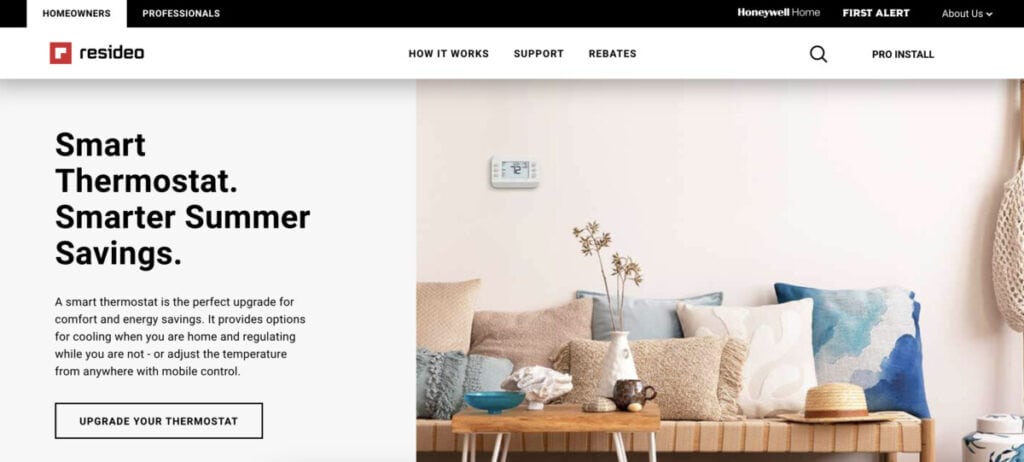
Resideo, a spin-off from Honeywell, delivers smart home comfort and security through a unified mobile platform. Its app allows homeowners to control smart thermostats, security cameras, water leak detectors, and energy monitors. In 2025, Resideo has expanded its offerings with AI-powered energy optimization and enhanced alert systems for emergencies. The app offers a user-friendly interface with scheduling, geofencing, and real-time status updates. Backed by Honeywell’s long-standing expertise in home systems, Resideo brings industrial-grade reliability to the consumer market, making homes not just smarter but also safer and more energy-efficient.
10. IBM Watson IoT
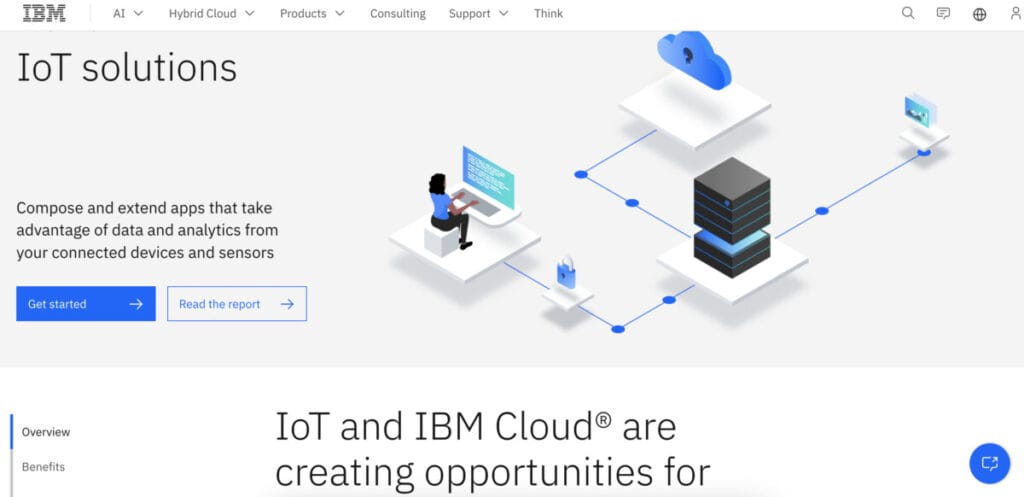
IBM Watson IoT stands out in the enterprise space with its powerful AI-driven analytics platform. Designed to handle vast volumes of sensor data, Watson IoT enables predictive maintenance, anomaly detection, and real-time decision-making across industries like automotive, manufacturing, and oil & gas. The platform supports integration with existing ERP systems and cloud services, making it easy to analyze performance trends or operational risks. Advanced machine learning models are applied to IoT streams to uncover patterns, improve efficiency, and reduce downtime. For organizations seeking to convert raw data into actionable intelligence, Watson IoT remains a leading choice.
Where IoT Apps Are Having the Biggest Impact
Smart Homes
IoT apps are redefining modern home life by allowing users to automate and control everything from lighting and locks to thermostats and appliances via a single mobile interface. Voice assistant compatibility, energy usage tracking, and home security features make these apps essential to daily routines. In 2025, smart home platforms will also include AI-driven climate control, pet monitoring, and advanced leak detection, improving comfort and reducing utility bills. As privacy concerns grow, modern apps also come equipped with encryption and access control for safer home automation.
Healthcare
In the healthcare space, IoT apps are bridging the gap between patients and providers. Wearables now track blood oxygen levels, ECGs, glucose, and sleep cycles in real time. Apps alert users and caregivers about anomalies, enabling early intervention and reducing emergency visits. For healthcare professionals, dashboards provide remote monitoring and patient engagement tools that are HIPAA-compliant and cloud-connected. In 2025, expect to see more integration with telemedicine, AI diagnostics, and automated medication reminders, helping improve outcomes while reducing hospital readmissions.
Mobility & Automotive
IoT apps in mobility have revolutionized how we interact with vehicles and public transit. Fleet managers can track vehicle locations, fuel efficiency, and driver behavior in real time. Car owners receive maintenance alerts, remote unlock/start features, and over-the-air software updates. Integration with EV charging stations and traffic optimization systems allows for smarter, more sustainable transportation. As autonomous driving technologies grow, IoT apps are also playing a key role in data logging and sensor fusion, ensuring vehicle safety and responsiveness.
Industrial IoT (IIoT)
Industrial settings benefit tremendously from IoT platforms that monitor machinery, environmental conditions, and workflow efficiency. Apps enable predictive maintenance by identifying mechanical issues before failures occur. Sensors track temperature, humidity, vibration, and load, helping optimize factory conditions and prevent downtime. Supply chain visibility improves through asset tracking and warehouse automation features. In 2025, energy-intensive industries will also use IoT apps to reduce carbon footprints, manage compliance, and respond in real time to performance anomalies.
Wearables
Wearables continue to surge in popularity thanks to their integration with robust companion apps. These apps collect and analyze data from fitness bands, smart rings, and health monitors, giving users personalized feedback on activity levels, stress, and wellness trends. Beyond fitness, wearables now support fall detection, hydration tracking, and even sleep coaching. Developers are building increasingly interactive interfaces, allowing for challenges, rewards, and social sharing. Wearables paired with AI-driven apps are becoming a cornerstone of preventive health and lifestyle optimization.
Emerging Trends in IoT Application Development
As IoT ecosystems mature, several key trends are shaping the future of app development in 2025:
- Edge Computing: Devices are increasingly capable of processing data locally, reducing reliance on cloud services and improving response times. This is crucial for real-time operations in industries like healthcare, automotive, and manufacturing.
- 5G Expansion: With ultra-low latency and higher bandwidth, 5G enables faster data transmission between devices, making remote monitoring and autonomous operations more responsive and reliable than ever before.
- AI Integration: IoT apps are now embedding machine learning models directly into devices, allowing for predictive maintenance, behavioral analytics, and anomaly detection without human input.
- Energy Optimization: Developers are optimizing battery usage by incorporating sleep modes, low-power protocols, and efficient code that minimizes resource consumption, especially in wearables and remote sensors.
- Voice-Enabled Interfaces: As users demand hands-free control, IoT apps are integrating with smart speakers and wearables that support voice commands, improving accessibility and ease of use.
- Open APIs: Interoperability is key in a diverse IoT landscape. Open APIs allow devices and services to connect seamlessly, accelerating innovation and multi-platform integration.
Stormotion Is the Best Partner for IoT App Development
When it comes to building scalable, secure, and device-ready IoT applications, Stormotion is the development partner businesses trust in 2025. With a deep understanding of backend systems and a refined approach to mobile UX, Stormotion ensures every application delivers a seamless user experience while meeting complex technical demands.
Why Choose Stormotion?
- Custom IoT App Development: Whether for BLE devices, wearable tech, environmental sensors, or smart home ecosystems, Stormotion designs tailored mobile and web apps from the ground up.
- Real-Time Device Communication: Using protocols like MQTT, CoAP, and WebSockets, Stormotion enables fast and reliable two-way communication between apps and devices — vital for mission-critical use cases.
- Security First: Their security stack includes encrypted APIs, secure firmware updates, and multi-factor authentication to safeguard data and user privacy.
- Cloud Integration: Stormotion provides native support for AWS IoT, Azure IoT Hub, Google Cloud IoT, and custom cloud deployments, ensuring flexibility and scalability across platforms.
- Ongoing Optimization & Support: From launch to post-deployment, Stormotion offers performance tuning, analytics dashboards, and long-term maintenance for continued success.
For startups and enterprises ready to lead in the connected economy, Stormotion delivers the smart, reliable solutions needed to bring IoT products to life, transforming innovative ideas into scalable, real-world applications.
Suggested articles:
- The Importance of Cloud Computing for Scalable AI Edge Solutions
- Is Modern Mobile Connectivity Right for You? Pros and Cons to Consider
- The Business Case for Moving to a Public Cloud with Scalable Compute and AI Tools
Daniel Raymond, a project manager with over 20 years of experience, is the former CEO of a successful software company called Websystems. With a strong background in managing complex projects, he applied his expertise to develop AceProject.com and Bridge24.com, innovative project management tools designed to streamline processes and improve productivity. Throughout his career, Daniel has consistently demonstrated a commitment to excellence and a passion for empowering teams to achieve their goals.